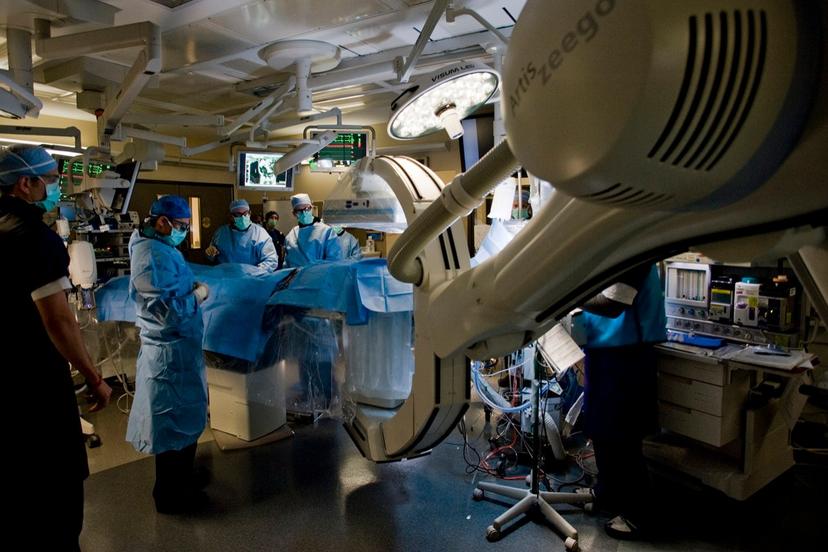Medical Equipment Manufacturing

Industry Outlook
Spending on medical devices has increased significantly over the last two decades and employment in the field is expected to remain steady as advances in technology—such as the development of implantable defibrillators and new imaging modalities—create demand for workers. The growing U.S. population—especially the elderly—will increase demand for medical technology. Factors that may cause growth to slow include increasing government regulation and changes to the health care industry (which may influence purchasing trends for medical technology).
The global medical equipment and supplies manufacturing industry was valued at about $442 billion in 2020, according to First Research. Annual growth was expected to be at a rate of 6 percent from 2021 through 2023, reaching $603 billion by the end of 2023. The major markets for this industry include the United States, Japan, Germany, France, the United Kingdom, Italy, and China.
Many medtech companies are expanding into international markets—especially emerging markets such as China, India, and Brazil that have the potential to offer higher profit margins than the United States. Some new devices and technologies are now being introduced in Europe or in emerging nations before they are put to use in the United States.
The coronavirus pandemic, which began in Wuhan, China in late 2019, triggered high demand for medical devices in the treatment of COVID-19. This includes respirators and ventilators. The research group IBISWorld forecast that the value of medical device imports would fall in 2020 because other countries have had to meet their own domestic demand for medical devices in treating COVID-19 before selling to the U.S. As of late 2020, the U.S. medical device manufacturing industry was valued at $47 billion, with 1,109 businesses employment 100,874 people. The vaccine for COVID-19 rolled out in 2021 and growth in the medical device manufacturing industry will resume through 2025. Factors contributing to an increase in revenue in this industry include health care reform, technological advancements, outsourcing, regulation, and the aging population.
As the 2020s began, technologies like artificial intelligence (AI) were very much at the industry's cutting edge, according to a September 2019 report from EY. "Medtech remains exciting, as industry players continue to unlock the power of data to offer personalized treatment for more effective and faster patient outcomes, the firm explained. "An increasing number of AI algorithms are now approved by the US Government—a trend that is set to continue as our understanding of AI matures. Consolidation into therapeutic areas also continues to build scale, driving companies to be more competitive, while collaboration with non-traditional partners to access diverse skills and talent will be critical to building a cybersecure ecosystem for data exchange between devices or products."
Despite the impact of AI and other breakthrough technologies, EY noted that underinvestment in research and development threatened the industry's long-term growth prospects. Additionally, greater collaboration was needed between patients, payers, and industry providers. In 2018, the firm revealed that research and development spending increased 11 percent. This was a marked improvement over disappointing investment levels the previous year. Over the long term, it was unclear if more robust investments would continue.
Salaries in the medtech industry—especially for engineers and managers—exceed those earned by their counterparts in other industries. More than 41 percent of medtech workers surveyed by Medical Product Outsourcing magazine in late 2019 earned between $75,000 and $150,000. Nearly 4 percent earned between $15,000 and $20,000, and about 8 percent earned less than $15,000.
The U.S. Department of Labor (DOL) reports that opportunities for biomedical engineers in the industry will continue to grow. Employment is expected to increase 4 percent from 2018 to 2028. In addition to rising demand for biomedical devices and procedures from the aging baby boom generation, employment growth will occur because of new technologies and related applications, including 3D printing and smartphone technology. Workers with advanced education, technical skills, and experience will have the best job prospects.
The FDA’s 510(k) process allows for clearance of Class II medical devices for sale. The Advanced Medical Technology Association has estimated that 90 percent of medical devices have been authorized for use in the United States through the 510(k) process. In 2017, the Food and Drug Administration Reauthorization Act included "improvements to premarket review times and investments in strategic initiatives like the National Evaluation System for health Technology (NEST) and patient input," according to the FDA. In early 2020, the administration initiated a pilot program to make the process of obtaining medical device clearance easier via its Submission Template And Resource (eSTAR) program, which automatically embedded application content into a PDF document, making the 510(k) applications more manageable.
"As technology advances, the FDA must keep pace with the increasing complexity of rapidly developing technology and continue to modernize and evaluate our programs and processes, ensuring they continue to be efficient, consistent and scientifically rigorous," explained FDA Center for Devices and Radiological Health Director Jeffrey Shuren in the February 27, 2020, issue of Medical Design & Outsourcing. "eSTAR is intended to improve our overall productivity, enabling the agency’s review staff to put more of our time and resources into evaluating applications for devices that pose the highest potential risks to patients."
